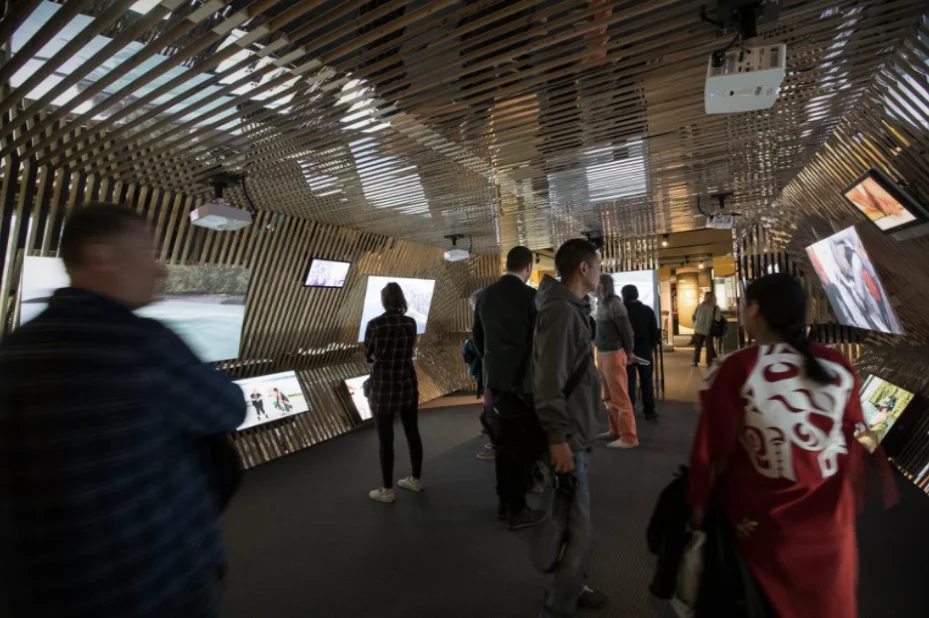
Culture at the Centre, a collaborative exhibit at the Museum of Anthropology, brings together the work of five Indigenous cultural centres and six nations. Its March opening showcased this attitude of partnership with a collection of performances and speeches by the communities involved.
The Musqueam Cultural Education Centre, the Squamish-Lil’wat Cultural Centre, the Heiltsuk Cultural Education Centre, the Nisg̱a’a Museum and Haida Gwaii Museum and the Haida Heritage Centre at Ḵay Llnagaay all contributed to this exhibit, which is on display until October 8.
Culture at the Centre opened with members of the six nations involved sharing traditional dances, songs and stories. The great hall was packed, and attendees were able to remember the past while looking to the future. The exhibit presents cultural objects not as static relics, but as evolving, living parts of these communities — past, present and future. Many of the objects in the exhibit were not initially on display because they were being used during the opening reception.
It is important that Indigenous communities feel like they are able to share their knowledge in a space like the Museum of Anthropology without fearing persecution. Morgan Guerin, a councillor for the Musqueam Nation who helped put together the exhibit, spoke about how this hasn’t always been the case.
“In this day and age of true truth and reconciliation, we can express [our] story a little better in a more safe and trusting environment,” he said. “It’s really opened up doors and windows that haven’t been over time. There [are] medicines that we can show, perhaps not how we use them but at least speak a bit about how they mean so much more to us without fear of repercussions and it being taken away.”
Although the existence of Culture at the Centre is testament to the fact that there has been progress, this does not erase the past that Indigenous communities must live with. During the opening ceremonies, one community performed a song and dance that told the story of how their ancestors were forced to take all of their cultural possessions to the centre of the village and watch them burn.
Guerin also highlighted the fact that Culture at the Centre represents a change that is not in isolation.
“We’re seeing this not just locally but globally, and these steps that we’re taking in Musqueam’s backyard today are like a seed that’s been found and grown into a tree for future generations,” he said.
Apart from seeing rare items like a walrus skull, visitors can explore the three main themes of the exhibit: land and language, continuity and communities, and repatriation and reconciliation, through a series of multimedia displays.
In regards to the culture that is being shared, Guerin said that “this is who we are. We are here. We have always been here, always will be here. Culture is the teaching of our ancestors and that is truly who we are. Without that, we are just another group of people living together.”

